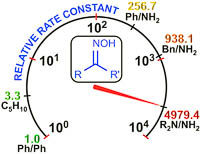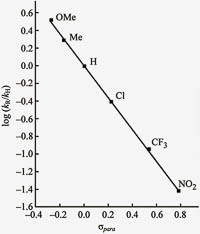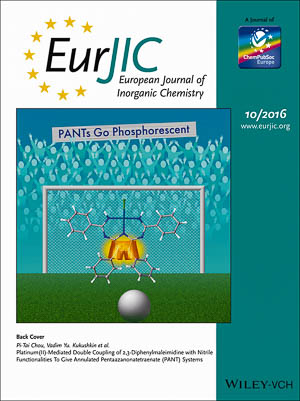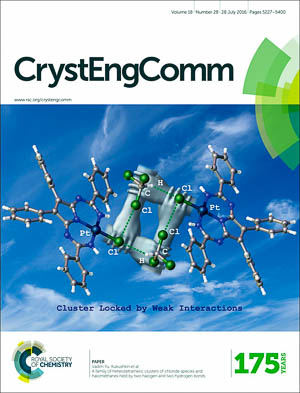Reaction Mechanisms and Reactivity of Organometallic Compounds
Principal investigator: Dr. Dmitrii S. Bolotin, Assistant Professor (This email address is being protected from spambots. You need JavaScript enabled to view it.)

 Knowledge of reaction mechanisms is essential for rational planning of synthetic routes to organic and organometallic compounds as well as for optimization of reaction conditions. Based upon physicochemical data, kinetic studies, and theoretical calculation data we determine structures of reaction intermediates and calculate such kinetic parameters as enthalpy and entropy of activation. We also verify correlations between electronic/steric effects of substituents in reactants and we study reactivity of organometallic/organic species.
Knowledge of reaction mechanisms is essential for rational planning of synthetic routes to organic and organometallic compounds as well as for optimization of reaction conditions. Based upon physicochemical data, kinetic studies, and theoretical calculation data we determine structures of reaction intermediates and calculate such kinetic parameters as enthalpy and entropy of activation. We also verify correlations between electronic/steric effects of substituents in reactants and we study reactivity of organometallic/organic species.
- Organometallics, 2016, 35, 3612; DOI: 10.1021/acs.organomet.6b00678
- Inorg. Chem., 2015, 54, 4039; DOI: 10.1021/acs.inorgchem.5b00253
- Inorg. Chem., 2014, 53, 10312; DOI: 10.1021/ic501333s
Theoretical studies in organometallic and coordination chemistry: reactivity, catalysis, and non-covalent interactions
Principal investigator: Dr. Alexander S. Novikov, Senior Research Fellow (This email address is being protected from spambots. You need JavaScript enabled to view it.)



Quantum chemical calculations allow the solution of different issues, which often very difficult or even impossible to study experimentally. These issues include, e.g., composition and energies of molecular orbitals, charge distribution, nature of chemical bonding and inter/intramolecular interactions, conformational transitions and rotation barriers of functional groups, elementary reaction steps and their driving forces, thermodynamic and kinetic factors.
Our group conducts a multidisciplinary research at the intersection of experimental and theoretical chemistry. We applied modern advanced quantum chemical methods (ab initio and DFT) as well as some special techniques (QTAIM, NBO, CDA, BSSE-correction, isodesmic reactions, HSAB principle theoretical model, Hirshfeld surface analysis) upon studies of organometallic and coordination compounds, their reactivity, and catalytic transformations.
Our particular interest include (i) the nucleophilic addition and cycloaddition reactions involving substrates featuring the C≡N moiety, viz., isocyanide and nitrile ligands (mechanisms, driving forces, kinetics and thermodynamics, isomerism, properties of coordination bonds, orbital/charge factors); (ii) photophysical properties of platinum group coordination compounds; (iii) studies of non-covalent interactions, viz. hydrogen, halogen and chalcogen bonds, anagostic and metallophilic interactions, stacking.
Publications
- ACS Omega 2017, 2, 1380. DOI: 10.1021/acsomega.7b00130
- Tetrahedron 2017, 73, 3025. DOI: 10.1016/j.tet.2017.04.014
- Cryst. Growth Des. 2017, 17, 1353. DOI: 10.1021/acs.cgd.6b01754
- Z. Kristallogr. 2017, 232, 299. DOI: 10.1515/zkri-2016-2018
- J. Am. Chem. Soc. 2016, 138, 14129. DOI: 10.1021/jacs.6b09133
- Chem. Commun. 2016, 52, 5565. DOI: 10.1039/c6cc01107a
- Phys. Chem. Chem. Phys. 2016, 18, 14104. DOI: 10.1039/c6cp00861e
- CrystEngComm 2016, 18, 5278. DOI: 10.1039/c6ce01179a
- ChemistrySelect 2016, 3, 456. DOI: 10.1002/slct.201600130
- Organometallics 2016, 35, 1684. DOI: 10.1021/acs.organomet.6b00144
- RSC Catal. Sci. Tech. 2016, 6, 1343. DOI: 10.1039/c5cy01367d
- Inorg. Chem. 2015, 54, 4039. DOI: 10.1021/acs.inorgchem.5b00253
- Dalton Trans. 2015. 44, 6003. DOI: 10.1039/c4dt03870c
- ACS Catal. 2013. 3, 1195. DOI: 10.1021/cs400155q
- Chem. Eur. J. 2013. 19, 2874. DOI: 10.1002/chem.201203098
International collaboration
- Instituto Superior Técnico, Universidade de Lisboa (Lisbon, Portugal). Research group of Prof. Armando J. L. Pombeiro
- Kemian laitos, Jyväskylän yliopisto (Jyväskylä, Finland). Research group of Prof. Matti Haukka


